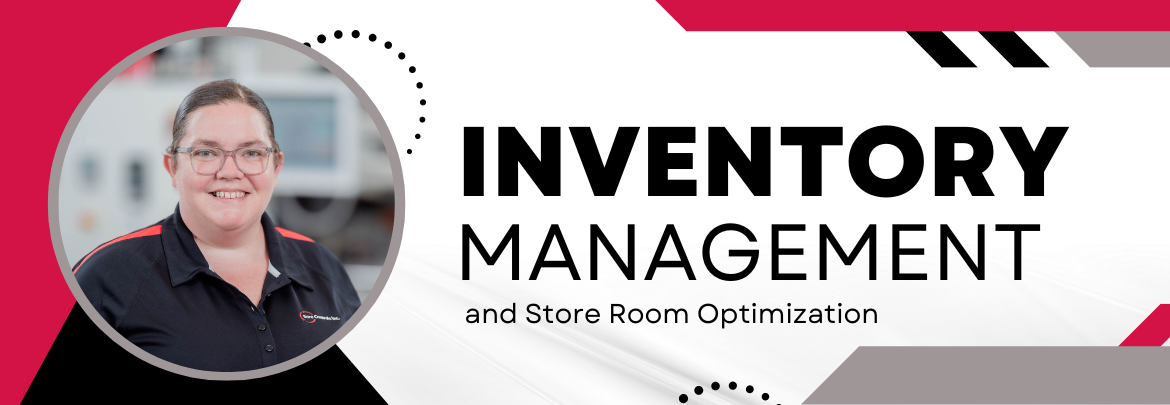Authored by Kat McCard, Technical Customer Service Rep
Inventory management has always been one of the most crucial aspects of running a manufacturing plant. Even the slightest problem in tracking and managing your inventory can lead to a whole series of complications that will negatively impact your business operations. The availability of components in inventory is essential to meet demand while avoiding stock shortages or overstocking. Put simply, managing inventory properly can result in the maximization of profits.
For many plants, the challenge is not that they don’t know what is in their warehouse, but rather, they don’t know how much clutter they have. So what is storeroom optimization? This process identifies and categorizes all items in your warehouse and helps your plant run more efficiently.
Let’s look at some of the main reasons to improve inventory management and optimize plant storerooms.
1. Avoid stock outages:
An efficient inventory management system helps you avoid stock outages. If your production process is interrupted because of a lack of supplies, it can lead to manufacturing downtime and lost profits. This situation can be avoided by regularly monitoring inventory levels and placing reorder points. While automated inventory management systems can help manage these reorder points for you, errors often arise and it does not ensure that you always have a sufficient supply on hand.
2. Eliminate waste:
Inventory can be the source of waste if not managed properly. An appropriate inventory management system can lead to the reduction of waste by minimizing overstocking. Ordering components that can support multiple applications is also helpful. This allows the company to save costs that would have gone towards storing excess inventory and its associated expenses.
3. Increase profitability:
As previously mentioned, good inventory management can boost profitability. Proper inventory management ensures that goods are available to meet customer demand without the need for overstocking or too few products. This supports the company’s ability to scale accurately while avoiding waste, which leads to an increase in profits.
Unfortunately, most plants are running with increasingly lean crews. Inventory management and store room optimization are often overlooked. To avoid making costly errors, many plants are turning to third party vendors like Sure Controls to assist.
Here are a few of the benefits you can expect with a Joint Management Inventory Program:
- More accurate information on your inventory
- Shared data with your part supplier – leading to fewer order entry errors and faster order processing.
- Consolidation of like items
- i.e. a ceramic band heater and a mica band heater have the same diameter, wattage, and voltage. The vendor can figure out which heater works best in the applications both heaters are used in, and change to that heater so you have one piece of inventory rather than two.
- Discovering pain points
- In going through this process, the vendor can discover different items that are causing maintenance teams grief. Whether it is needing to add armor to a thermocouple’s leads, or that your team is in need of a remote keypad for a drive rather than the direct mount, they’ll identify and eliminate the issue.
Let’s look at an example. Here are a few of the outcomes from an area manufacturer that hired Sure Controls for a Joint Inventory Management program.
- Consolidated six heaters down to one that works in all applications for that wattage and voltage.
- Established min/max for most used products based on lead time and minimum order quantities.
- Ensured customer data matched Sure Controls data for part numbers, quantities, and where the products are used.
- Improved lead times and minimized expensive “rush” orders.
- Provided one-on-one attention to alleviate concerns from the maintenance team.
Having a vendor managed inventory program is not right for everyone. However, this initial process of storeroom optimization can help you lower your on-hand inventory, minimize lead times, and help minimize downtime due to missing product.

